Easter just wouldn’t be Easter without a Cadbury Creme Egg.
According to Cadbury’s parent company Mondelez International, 3.7 Creme Egg packs are sold per second every year, equating to a whopping 220 million.
It’s clear that the ooey, gooey confectionery is a firm favourite, and has been for nearly four decades now.
The iconic chocolate egg contains a yellow and white fondant that oozes when its chocolate shell is split, resembling egg yolk oozing out of a real egg.
Wrapped in their signature red, purple and yellow foil, the sight of Cadbury Creme Eggs is a comforting reassurance that spring has arrived and Easter is on its way.
On social media, fans sing their praises of Creme Eggs, declaring them to be ‘god tier’ and ‘the best’ Easter candy around. But not everyone is convinced, with some declaring that they’re ‘gross’ and too ‘sickly sweet’.
So, how did this unusual candy become such a must-have during this time of year?
To understand the enduring popularity of the Creme egg, we must first trace its beginnings all the way back to 1923.
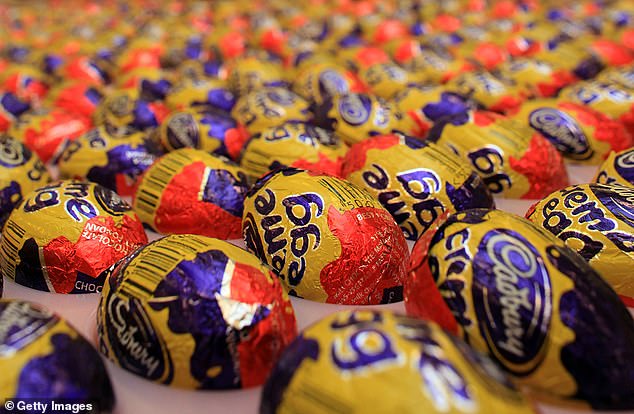
The Cadbury Creme Egg is, for many Brits, a staple at Easter time (stock image)
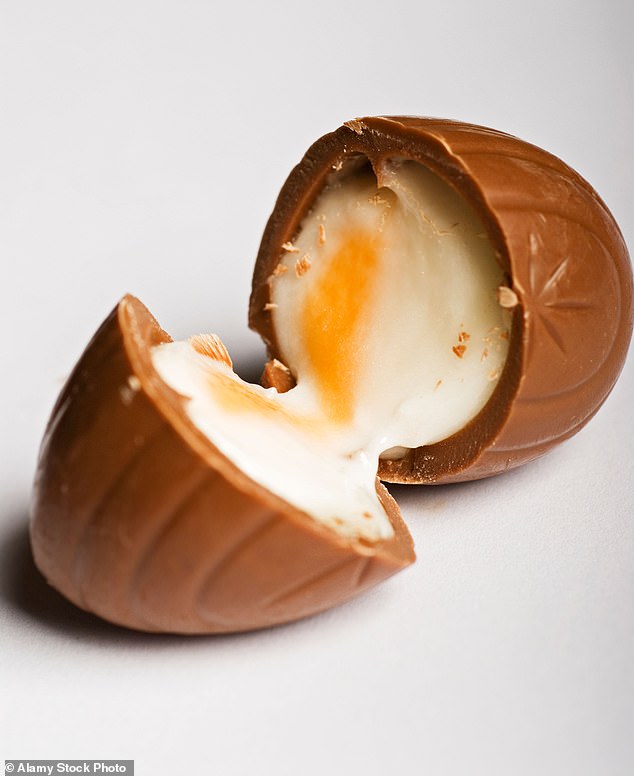
The oozy yellow and white fondant filling, which resembles a real egg, make Creme Eggs a unique and fun Easter treat (stock photo)
Before Creme Eggs as we know them, there were cream-filled eggs that contained variations of fondant, marzipan, nougat, and even Turkish Delight.
They first appeared in their current form in 1971 and were sold alongside Fry’s Creme Egg and Fry’s Border Egg.
Fry’s, owned by Joseph Storrs Fry, was one of the three big British confectionery manufacturers in the 19th and 20th centuries.
Cadbury merged with Fry in 1919, but the two companies continued to sell under their separate brands until the 70s.
In 1972, Cadbury decided to focus solely on marketing the Cadbury Creme Egg and Fry’s Creme Egg was discontinued.
Within the decade, the popularity of Creme Eggs soared and soon, more than 200 million were being sold in Britain every year during Easter.
This paved the way for Cadbury to launch the Creme Egg in the US through a now-iconic 80s advertisement that showed a white bunny clucking like a chicken before revealing a nest of Creme Eggs.
Part of the reason for why we look forward to Creme Eggs so much is their seasonality, which makes them a limited treat.
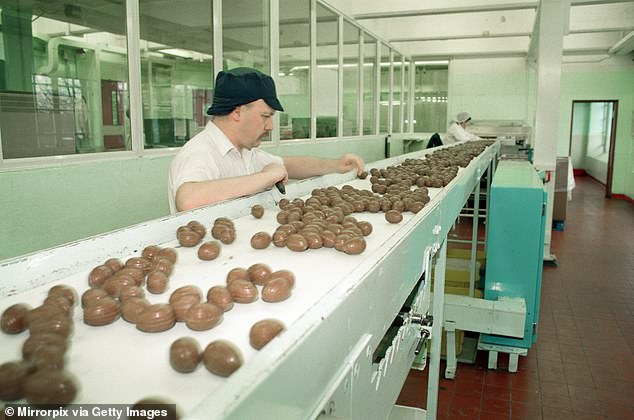
Creme Eggs are made 365 days a year, as pictured here in Cadbury’s Bournville factory, but are only available between December and Easter Sunday
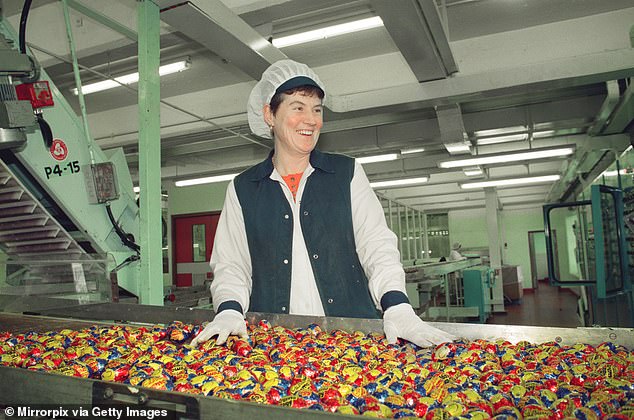
The limited availability of Creme Eggs makes them a seasonal treat, which Brits look forward to as they also herald the coming of spring
The chocolate eggs are made 365 days a year, but are generally only available between December and Easter Sunday.
The company did try to sell Creme Eggs all year round in the 80s, due to their burgeoning popularity, but they returned to seasonal availability when sales dropped.
Tony Bilborough, a Cadbury spokesperson, told BBC Radio 5 in 2014 that the attempt to make Creme Eggs a year-round treat ‘didn’t work’.
‘There’s something special about Creme Egg season,’ he said. ‘We long for it in those long, eggless days of summer and autumn.’
However, in 2015, Cadbury saw its Creme Egg sales plummet after outraged Brits refused to buy the chocolates due to a change in the recipe.
The firm sparked fury when it switched from using signature Cadbury Dairy Milk for the chocolate shells to a ‘standard cocoa mix chocolate’.
The move was seen as a way to cut costs and coincided with a decision to cut the number of Creme Eggs in a multi-pack from six to five.
Analysts said that sales of Creme Eggs crashed by more than £6million over Easter that year compared to the year before.
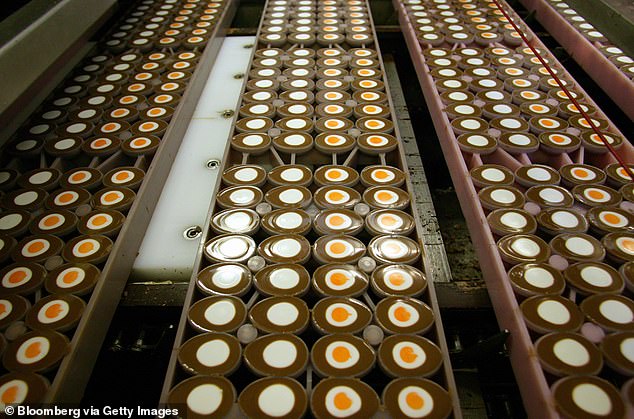
While Creme Eggs continue to be popular, in 2015 Cadbury saw a significant dip in sales after the company changed the recipe

The recipe change saw the chocolate used for the shell of the Creme Egg change, which customers protested, but they continue to be a must-have at Easter time (stock photo)
Cadbury defended the recipe change, with a spokesperson saying that the Creme Egg ‘had never been called Cadbury’s Dairy Milk Creme Egg’.
‘We have never played on the fact that Dairy Milk was used,’ he insisted.
Despite the setback, Creme Eggs continue to be a crowd-pleaser across the country and other confectionery brands have jumped on the bandwagon with their own versions.
Katie Cross, founder of Exeter-based letterbox brownies company Cake or Death, tells FEMAIL: ‘Cadbury have done an amazing job at marketing Creme Eggs as an Easter essential, using their bunny mascot to create that strong association with Easter.
‘It’s a treat that people have grown up with, which is hugely nostalgic for many.’
Cake or Death recently launched its own vegan version of creme eggs.
‘We decided to create our own dark chocolate version to cater to those who find the Cadbury version too sweet, and it’s also vegan for those following a plant-based diet,’ Cross adds.
‘Easter is already a huge occasion for Cake or Death, but we have been bowled over by the popularity of our eggs, which are beautifully packaged and make the perfect Easter gift.’
Creme Eggs are also often used in Easter-themed bakes, from brownies to cakes to hot cross buns.
In fact, Marks & Spencer launched Dippy Egg Filled Hot Cross Buns this year, which are cocoa buns with a gooey sweet ‘egg’ centre that is very reminiscent of a Creme Egg.
So the next time you pick up a Creme Egg, you’ll be continuing a decades-long tradition of Easter chocolate goodness, complete with mandatory sticky fingers that come with the experience of diving into one.







